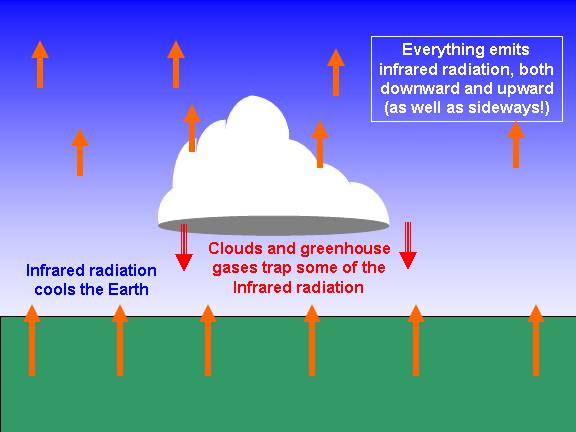
Is there a deliberate effort by the government to dumb down the masses? The statement is hard to prove but there exists a great amount of data proving that the ruling elite not only tolerates, but effectively introduces policies that have a detrimental effect on the physical and mental health of the population. This article looks at the many ways the modern man is being dumbed down. Part I looks at the poisons found in everyday foods, beverages and medications.
The theme of dumbing-down and dehumanizing the masses are often discussed in articles on The Vigilant Citizen. The presence of those concepts in popular culture are, however, only the outward and symbolic expression of the profound transformation happening in our society. Scientific data has been proving for years that governments around the world are tolerating the selling of many products which have a direct and negative effect on cognitive and physical health. As we will see in this article many everyday products cause brain damage, impaired judgment and even a lower IQ.
Is a dumber population something that is desired by the elite? Hitler once said �How fortunate for the leaders that men do not think.� An educated population knows its rights, understands the issues and takes action when it does not approve of what is going on. Judging by the incredible amount of data available on the subject, it seems that the elite want the exact opposite: an unhealthy, frightened, confused and sedated population. We will look at the effects of medication, pesticides, fluoride and aspartame on the human body and how those products are being pushed by people from inside the power structure.
Prescription Drug Abuse
America has witnessed during the last decades a staggering rise of drugs being prescribed to treat all kinds of problems. Children are particularly affected by this phenomenon. Since the 1990's, an ever-rising proportion of American children are being diagnosed with �illnesses� such as Attention Deficit Disorder (ADD) and are prescribed mind-altering drugs, such as Ritalin.
The DEA has become alarmed by the tremendous increase in the prescribing of these drugs in recent years. Since 1990, prescriptions for methylphenidate have increased by 500 percent, while prescriptions for amphetamine for the same purpose have increased 400 percent. Now we see a situation in which from seven to ten percent of the nation�s boys are on these drugs at some point as well as a rising percentage of girls.
- Source
Today, children who show too much energy, character or strength are being willfully sedated with powerful drugs which directly affect the way their brains function. Are we going in the right direction here?
Even if ADD is not a clearly defined and documented disorder � it causes NO observable biological effects whatsoever � children are still being diagnosed with the illness in great numbers. This raises important ethical questions.
�Pediatricians as well as ethicists have also voiced their concerns in usage of these stimulants. In an article published in the New York Times, they have questioned the appropriateness of medicating children without a clear diagnosis in hopes that they do better in school. They also asked whether the drugs should be given to adults failing in their careers or are procrastinators. They question the worthy of this method.
This concern have also been voiced out in the January 2005 issue of Pediatrics in which the large discrepancies between pediatricians� practice patterns and the American Academy of Pediatrics (AAP) guidelines for the assessment and treatment of children with attention-deficit/hyperactivity disorder (ADHD) was bought forth. The article also stated that because the medical community didn�t come to a consensus on how to diagnose ADD/ADHD, they should not be making extensive decisions as to how to treat individuals who have been diagnosed with the disorder.�
The usage of Ritalin at a young age breaks the psychological threshold people maintain towards the usage of prescription pills, which makes those children more likely to consume psychotropic drugs later in their lives. We should not be surprised to witness a dramatic increase of consumption of antidepressants in the years to come. The trend is already beginning:
�In its study, the U.S. Centers for Disease Control and Prevention looked at 2.4 billion drugs prescribed in visits to doctors and hospitals in 2005. Of those, 118 million were for antidepressants.
The use of antidepressants and other psychotropic drugs � those that affect brain chemistry � has skyrocketed over the last decade. Adult use of antidepressants almost tripled between the periods 1988-1994 and 1999-2000. Between 1995 and 2002, the most recent year for which statistics are available, the use of these drugs rose 48 percent, the CDC reported.�
- Elizabeth Cohen, CNN
The use of prescription pills might be of a great help for specific and properly diagnosed cases. The pharmaceutical industry however, which has many �friends� in the highest levels of government, is pushing for the widespread use of psychiatric drugs within the public. Since 2002, a great number of pills claiming to fix all kinds of mental conditions have been marketed to the public, but many of those pills were approved for sale without proper research for side effects. Even worse: the side effects might have been known but hidden to the public. Below is a list of warnings issued on commonly sold psychiatric drugs. Some of those side effects are actually frightening as a pill should not be able to have that much power over the human brain. Think about it: Some drugs are subject to warnings because they can cause you to � commit suicide?

2004
March 22: The Food and Drug Administration (FDA) warned that Prozac-like antidepressants (called Selective Serotonin Reuptake Inhibitors or SSRIs) could cause �anxiety, agitation, panic attacks, insomnia, irritability, hostility, impulsivity, akathisia [severe restlessness], hypomania [abnormal excitement] and mania [psychosis characterized by exalted feelings, delusions of grandeur].�
June: The Therapeutic Goods Administration, the Australian equivalent of the FDA, reported that the latest antipsychotic drugs could increase the risk of diabetes.
June: The FDA ordered that the packaging for the stimulant Adderall include a warning about sudden cardiovascular deaths, especially in children with underlying heart disease.
October 15: The FDA ordered its strongest �black box� label for antidepressants warning they could cause suicidal thoughts and actions in under those under 18 years old.
October 21: The New Zealand Medicines Adverse Reactions Committee recommended that older and newer antidepressants not be administered to patients less than 18 years of age because of the risk of suicide.
December 17: The FDA required packaging for the �ADHD� drug, Strattera, to advise that �Severe liver damage may progress to liver failure resulting in death or the need for a liver transplant in a small percentage of patients.�
2005
February 9: Health Canada, the Canadian counterpart of the FDA, suspended marketing of Adderall XR (Extended Release, given once a day) due to reports of 20 sudden unexplained deaths (14 in children) and 12 strokes (2 in children).
April 11: The FDA warned that antipsychotic drug use in elderly patients could increase the risk of death.
June 28: The FDA announced its intention to make labeling changes to Concerta and other Ritalin products to include the side effects: �visual hallucinations, suicidal ideation [ideas], psychotic behavior, as well as aggression or violent behavior.�
June 30: The FDA warned that the antidepressant Cymbalta could increase suicidal thinking or behavior in pediatric patients taking it. It also warned about the potential increased risk of suicidal behavior in adults taking antidepressants.
August: The Australian Therapeutic Goods Administration found a relationship between antidepressants and suicidality, akathisia (severe restlessness), agitation, nervousness and anxiety in adults. Similar symptoms could occur during withdrawal from the drugs, it determined.
August 19: The European Medicines Agency�s Committee for Medicinal Products warned against child antidepressant use, stating that the drugs caused suicide attempts and thoughts, aggression, hostility, aggression, oppositional behavior and anger.
September 26: The Agenzia Italiana del Farmaco (Italian Drug Agency, equivalent to the FDA) warned against use of older (tricyclic) antidepressants in people under 18 years old. It also determined the drugs were associated with heart attacks in people of any age.
September 29: The FDA ordered that labeling for the �ADHD� drug Strattera include a boxed warning about the increased risk of suicidal thinking in children and adolescents taking it.
October 17: The FDA warned that the antidepressant Cymbalta could cause liver damage.
October 24: The FDA withdrew the stimulant Cylert from the market because of the risk of liver toxicity and failure.
November: The FDA warned that the antidepressant Effexor could cause homicidal thoughts.
2006
February 9: The FDA�s Drug Safety and Risk Management Advisory Committee urged that the strongest �black box� warning be issued for stimulants, because they may cause heart attacks, strokes and sudden death.
February 20: British authorities warned that Strattera was associated with seizures and potentially lengthening period of the time between heartbeats.
March 22: An FDA advisory panel heard evidence of almost 1,000 reports of kids experiencing psychosis or mania while taking stimulants.
May 3: FDA adverse drug reaction reports linked antipsychotic drugs to 45 child deaths and 1,300 serious adverse reactions, such as convulsions and low white blood cell count.
May 12: The manufacturer of Paxil warned that the antidepressant increases the risk of suicide in adults.
May 26: Health Canada issued new warnings of rare heart risks for all drugs prescribed for �ADHD,� including the risk of sudden death.
June 2: An FDA study determined that the antipsychotic drug, Risperdal, might cause pituitary tumors. The pituitary gland, at the base of the brain, secretes hormones that promote growth, and regulates body functions. Antipsychotics may increase prolactin, a hormone in the pituitary gland, and this increase has been linked to cancer. Risperdal was found to increase prolactin levels more frequently than in other antipsychotics.
July 19: The FDA said antidepressant packaging should carry warnings that they may cause a fatal lung condition in newborns whose mothers took SSRI antidepressants during pregnancy. Migraine sufferers also need to be warned that combining migraine drugs with SSRIs could result in a life-threatening condition called serotonin syndrome.
Food Poisoning
The modern man ingests in his lifetime an incredible amount of chemicals, artificial flavors and additives. Although t

here is growing awareness regarding healthy eating, there is also a lot of misinformation and disinformation.
At the present time, a single company � Monsanto � produces roughly 95% of all soybeans and 80% of all corn in the US. Considering this, the corn flakes you had for breakfast, soda you drank at lunch and beefstew you ate for dinner likely were produced from crops grown with Monsanto�s patented genes. There are numerous documents and films exposing Monsanto�s strong-arming of the agricultural industry, so I won�t expand on that issue. It is however important to note that a virtual monopoly currently exists in the food industry and there�s a unhealthy link between Monsanto and the American government: Many people who have passed laws in the fields of food, drugs and agriculture were also, at some point on the payroll of Monsanto. In other words, the elite decides which foods are sold to you.
Public officials formerly employed by Monsanto:
Justice Clarence Thomas worked as an attorney for Monsanto in the 1970s. Thomas wrote the majority opinion in the 2001 Supreme Court decision J. E. M. Ag Supply, Inc. v. Pioneer Hi-Bred International, Inc.J. E. M. AG SUPPLY, INC. V. PIONEER HI-BREDINTERNATIONAL, INC. which found that �newly developed plant breeds are patentable under the general utility patent laws of the United States.� This case benefited all companies which profit from genetically modified crops, of which Monsanto is one of the largest.
Michael R. Taylor was an assistant to the Food and Drug Administration (FDA) commissioner before he left to work for a law firm on gaining FDA approval of Monsanto�s artificial growth hormone in the 1980s. Taylor then became deputy commissioner of the FDA from 1991 to 1994. Taylor was later re-appointed to the FDA in August 2009 by President Barack Obama.
Dr. Michael A. Friedman was a deputy commissioner of the FDA before he was hired as a senior vice president of Monsanto.
Linda J. Fisher was an assistant administrator at the United States Environmental Protection Agency? (EPA) before she was a vice president at Monsanto from 1995 � 2000. In 2001, Fisher became the deputy administrator of the EPA.
Former Secretary of Defense Donald Rumsfeld was chairman and chief executive officer of G. D. Searle & Co., which Monsanto purchased in 1985. Rumsfeld personally made at least $12 million USD from the transaction.
Many laws (approved by ex-Monsanto employees) have facilitated the introduction and the consumption of genetically engineered foods by the public.
�According to current statistics, 45% of corn and 85% of soybeans in the United States is genetically engineered (GE). Estimates of 70-75% of processed foods found at our local supermarkets are believed to contain GE ingredients.
Other GE foods are canola, papayas, radicchio, potatoes, rice, squash or zucchini, cantaloupe, sugar beets, flax, tomatoes, and oilseed rape. One non-food crop that is commonly GE is cotton. The GE hormone recombinant bovine growth hormone (rBGH or Prosilac) was one of the first GE products allowed to enter the nation�s food supply. The U.S. Food and Drug Administration (FDA) approved Monsanto�s rBGH in 1993.�
- Anna M. Salanti, Genetically Engineered Foods
Although it is yet impossible to determine the long-term effects of genetically engineered foods on the human body, some facts have already been established. GE foods contain less nutrients and, most importantly, they are �chemical-friendly�.
�One of the features of GE foods is their ability to withstand unlimited application of chemicals, including pesticides. Bromoxynil and glyphosate have been associated with developmental disorders in fetuses, tumors, carcinomas, and non-Hodgkin�s lymphoma. Studies indicate that Monsanto�s recombinant Bovine Growth Hormone (rBGH) causes treated cows to produce milk with an increased second hormone, IGF-1. This hormone is associated with human cancers. Recommendations by the Congressional watchdog agency, Government Accounting Office (GAO), recommended that rBGH not be approved. The European Union, Canada, and others have banned it. The UN has also refused to certify that using rBGH is safe.�
� Ibid
Genetic modifications engineered by Monsanto makes their products bigger and more aesthetically pleasing. Another, less discussed �improvement� is the plants� ability to withstand nearly unlimited amounts of Roundup brand pesticides. This encourages farmers to use that brand of pesticides which is produced by � Monsanto.
Studies on Roundup link the powerful pesticide and herbicide to many health problems such as:
Increased risks of the cancer non-Hodgkin�s lymphoma
Miscarriages
Attention Deficit Disorder (the real one)
Fluoride

Another source of harmful chemicals is found in the modern man�s water supplies and soft drinks. As of 2002, the CDC statistics show that almost 60% of the U.S. population receives fluoridated water through the taps in their homes. The official reason for the presence of fluoride in our tap water? It prevents tooth decay. Ok � really? Is this mildly important benefit worth the consuming of great amounts of this substance by the population? Some studies even denied the dental benefits of fluorided water.
�Scientists now believe that the main protective action from fluoride does not come from ingesting the chemical, with the teeth absorbing it from inside the body, but from direct absorption through topical application to teeth. This means swallowing water is a far less effective way to fight cavities than brushing with fluoridated toothpaste.�
- Source
So why is fluoride still found in tap water? Here are some quick facts about fluoridation chemicals: they were once used as pesticides they are registered as �poisonous� under the 1972 Poisons Act, in the same group of toxins as arsenic, mercury and paraquat fluoride is scientifically classed as more toxic than lead, but there is about 20 times more fluoride than lead in tap water.
Many studies have been conducted on the effects of fluoride on the human body and some notable adverse effects have been noted: it changes bone structure and strength, impairs the immune system and it was linked to some cancers. Another alarming consequence of fluoridation is its effects on brain functions:
�In 1995, neurotoxicologist and former Director of toxicology at Forsyth Dental Center in Boston, Dr. Phyllis Mullenix published research showing that fluoride built up in the brains of animals when exposed to moderate levels. Damage to the brain occured and the behavior patterns of the animals was adversely effected. Offspring of pregnant animals receiving relatively low doses of fluoride showed permanent effects to the brain which were seen as hyperactivity (ADD-like symptoms). Young animals and adult animals given fluoride experienced the opposite effect � hypoactivity or sluggishness. The toxic effects of fluoride on the central nervous system was subsequently confirmed by previously-classified government research. Two new epidemiological studies which tend to confirm fluoride�s neurotoxic effects on the brain have shown that children exposed to higher levels of fluoride had lower IQs.�
- Source
A lesser known, but extremely important side effect of fluoride is the calcification of the pineal gland.

Up until the 1990s, no research had ever been conducted to determine the impact of fluoride on the pineal gland � a small gland located between the two hemispheres of the brain that regulates the production of the hormone melatonin. Melatonin is a hormone that helps regulate the onset of puberty and helps protect the body from cell damage caused by free radicals.
It is now known � thanks to the meticulous research of Dr. Jennifer Luke from the University of Surrey in England � that the pineal gland is the primary target of fluoride accumulation within the body.
The soft tissue of the adult pineal gland contains more fluoride than any other soft tissue in the body � a level of fluoride (~300 ppm) capable of inhibiting enzymes.
The pineal gland also contains hard tissue (hyroxyapatite crystals), and this hard tissue accumulates more fluoride (up to 21,000 ppm) than any other hard tissue in the body (e.g. teeth and bone).
- Source
Other than regulating vital hormones, the pineal gland is known to serve an esoteric function. It is known by mystic groups as the �third eye� and has been considered by many cultures to be part of the brain responsible for spiritual enlightenment and the �link to the divine�. Is enlightenment out of bounds for the modern man?
�In the human brain there is a tiny gland called the pineal body, which is the sacred eye of the ancients, and corresponds to the third eye of the Cyclops. Little is known concerning the function of the pineal body, which Descartes suggested (more wisely than he knew) might be the abode of the spirit of man.�
� Manly P. Hall, The Secret Teachings of All Ages
Aspartame
Aspartame is an artificial sweetner used in �sugar-free� products such as diet sodas and chewing gum. Since its discovery in 1965, Aspartame caused great controversy regarding its health risks � primarily causing brain tumors � and was denied its application to be sold to the public by the FDA. Searle, the company attempting to market Aspartame then appointed Donald Rumsfeld as CEO in 1977 � and things changed drastically. In a short period of time, Aspartame could be found in over 5,000 products.
�Donald Rumsfeld was on President Reagan�s transition team and the day after he took office he appointed an FDA Commissioner who would approve aspartame. The FDA set up a Board of Inquiry of the best scientists they had to offer who said aspartame is not safe and causes brain tumors, and the petition for approval is hereby revoked. The new FDA Commissioner, Arthur Hull Hayes, over-ruled that Board of Inquiry and then went to work for the PR Agency of the manufacturer, Burson-Marstellar, rumored at $1000.00 a day, and has refused to talk to the press ever since.�
- Source
Years after its approval by the FDA, leading scientists still urge the organization to ban this product.
�Dr. John Olney, who founded the field of neuoscience called excitotoxicity, attempted to stop the approval of aspartame with Attorney James Turner back in 1996. The FDA�s own toxicologist, Dr. Adrian Gross told Congress that without a shadow of a doubt, aspartame can cause brain tumors and brain cancer and violated the Delaney Amendment which forbids putting anything in food that is known to cause Cancer. Detailed information on this can be found in the Bressler Report (FDA report on Searle).�
- Ibid
In 1995, the FDA was forced to release, under the Freedom of Information act, a list of ninety-two symptoms caused by aspartame reported by thousands of victims:
Those symptoms are however only the tip of the iceberg. Aspartame has been linked to severe illnesses and long term health issues.
�According to the top doctors and researchers on this issue, aspartame causes headache, memory loss, seizures, vision loss, coma and cancer. It worsens or mimics the symptoms of such diseases and conditions as fibromyalgia, MS, lupus, ADD, diabetes, Alzheimer�s, chronic fatigue and depression. Further dangers highlighted is that aspartame liberates free methyl alcohol. The resulting chronic methanol poisoning affects the dopamine system of the brain causing addiction. Methanol, or wood alcohol, constitutes one third of the aspartame molecule and is classified as a severe metabolic poison and narcotic.�
- Ibid
In ConclusionIf the main message of has been to this point �watch what enters your mind�, the main message of this article is �watch what enters your body.� The consumption of the products stated above will probably not cause an immediate and noticeable effect. But, after many years of ingesting those substances, one�s thoughts become increasingly clouded and foggy, the ability to concentrate becomes hindered and judgment becomes impaired. In other words, the once sharp mind becomes dull. What happens when a population is heavily sedated and poisoned on a daily basis? It becomes numb, zombie-like and docile. Instead of asking important questions and seeking a higher truth, the dumbed-down mass simply accomplishes its daily tasks and absorbs whatever the media tells them. Is this what the elite is looking to create?
There is, however, a silver lining here. Many of the negative effects of the substances described above are reversible. And YOU are the one who decides what enters your body. This article provides a brief overview of dangers lurking for the unaware consumer, but tons of information is available on which to base enlightened decisions. Your body is a temple. Will you allow it to be desecrated?


















































